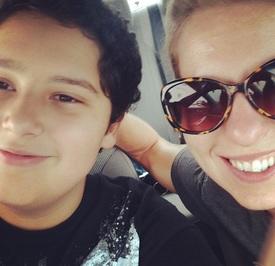Strength training questions

jaeysson
Posts: 41 Member
Hi all,
A little background...I've been doing cardio 3-4 times per week mostly cycling and a little jogging for about 2 years now. Now that I am in decent cardiovascular shape I would like to begin a strength training routine alongside my cardio. My goal is to lose ~15 more pounds and get my body fat% down. I began tracking my calories/nutrition a few weeks ago here on MFP and my diet is on track (I've lost ~5lbs in 2 weeks). Now I just need to begin weight lifting to round my fitness routine out.
Here are my questions:
-How do I determine how much weight I should start off with?
-Is the amount of weight decided from a certain percentage of your max?
-How many sets/reps is typical for strength training?
-My legs are already in good shape from all the cycling, should I only do legs 1 time per week and do upper body 3 times until my upper body catches up?
Here is the routing I was thinking to start off with:
Upper Body - Monday, Thursday
Chest (press)
Chest (fly)
Back (lats)
Back (row)
Deltoid (press)
Deltoid (front or side)
Triceps
Biceps
Abdominal
Lower Body - Tuesday, Friday
Quadriceps
Hamstrings
Calves
Hip Abductors
Hip Adductors
Abdominal
Oblique
Thanks!
Jason
A little background...I've been doing cardio 3-4 times per week mostly cycling and a little jogging for about 2 years now. Now that I am in decent cardiovascular shape I would like to begin a strength training routine alongside my cardio. My goal is to lose ~15 more pounds and get my body fat% down. I began tracking my calories/nutrition a few weeks ago here on MFP and my diet is on track (I've lost ~5lbs in 2 weeks). Now I just need to begin weight lifting to round my fitness routine out.
Here are my questions:
-How do I determine how much weight I should start off with?
-Is the amount of weight decided from a certain percentage of your max?
-How many sets/reps is typical for strength training?
-My legs are already in good shape from all the cycling, should I only do legs 1 time per week and do upper body 3 times until my upper body catches up?
Here is the routing I was thinking to start off with:
Upper Body - Monday, Thursday
Chest (press)
Chest (fly)
Back (lats)
Back (row)
Deltoid (press)
Deltoid (front or side)
Triceps
Biceps
Abdominal
Lower Body - Tuesday, Friday
Quadriceps
Hamstrings
Calves
Hip Abductors
Hip Adductors
Abdominal
Oblique
Thanks!
Jason
0
Replies
-
There's really no reason to immediately go to a split program since you're beginner.
The very best thing you can do for yourself is find a program geared for you, a progressive lifting program, and stick to it until it just doesn't work anymore.
There is Starting Strength by Mark Rippetoe.
There is also 5x5 Stronglifts you can find free on the internet.
Both are solid programs. Stronglifts is derivative of starting strength, and has far less explanation, but it's also free.
But basically it looks like:
Day 1:
Squat
Bench Press
Deadlift
Day 2:
Squat
Bench Press
Power Clean / Pendlay Row
Eventually, you add dips/pull ups.
The above compound exercises will hit all those areas much harder and better than doing a bunch of isolation work.
For example, you can isolate each of these:
Quadriceps
Hamstrings
Calves
Hip Abductors
Hip Adductors
Abdominal
Oblique
Or just do a ****ing barbell squat.
As far as weight and reps:
SS is 3x5
SL is 5x5
You start out with an empty bar and add weight every singe workout session.
You add 60lbs to your squat in the first two weeks!
PS - Power cleans and squats did amazing things for my cycling. I can really dig deep from those power cleans for sprinting and getting out of the saddle.0 -
Thank you wellbert. You are right, I probably need to go with the "less is more" method until I get further along. Also thanks for the program recommendations, a great place to start.0
-
Thank you wellbert. You are right, I probably need to go with the "less is more" method until I get further along. Also thanks for the program recommendations, a great place to start.
You probably have nearly a year's worth of 'beginners gains' to rely on. Take full advantage!0 -
You probably have nearly a year's worth of 'beginners gains' to rely on. Take full advantage!
I'm definitely looking forward to my gains! I'm riding a Century this Saturday and plan on starting a lifting program next week after my recovery.0 -
Another thing to add to Wellbert's post is making sure you focus on form when you lift. It's not enough to just pick up a heavy weight and either push or pull it from point A to point B.
www.exrx.net has many detailed descriptions of isolatory and dynamic movements and how to perform them, including video. www.bodybuilding.com also has good descriptions of exercises and how to perform them properly.
The key that I've discovered is making sure you don't let your muscles rest when you're doing your set. Get a good contraction out of the muscle but don't let it rest during the set. Keep a good pace going with your reps, too. Steady, not fast, but not super slow either, unless you're practicing just for form. Going a little lighter when you start will help a lot with making sure you've got good form. Also, watch how long you rest between sets. For isolation exercises (working one muscle at a time), they should be pretty short, like 1 or 2 minutes. For squats, deadlifts, push press, etc, you will want a few more minutes so that you're heart rate can come back down.
Also, another thing that I've discovered (and that my trainer has helped me deal with) is not prescribing yourself a rep limit or goal per set of an exercise (unless you are finding your max or something). I used to do that and when I reached my goal of 12, I didn't really feel all that worked. So, naturally, I upped the weight, but still kept the rep goal. I worked harder, but I didn't end up pushing myself. Point is, don't limit your potential by setting rep limits but also don't pick a weight so light that you end up doing 30 reps. A good weight training session should leave you feeling pretty taxed.0 -
Number of Sets - As a beginner, I would suggest you do 1 set of everything for the first three to four weeks; after that you can advance to 2 sets; at month four you can progress to 3 sets.
Perceived Scale of Exertion - use this scale to determine the amount of resistance used per exercise: Zero being extremely light and 10 being extremely heavy.
Number of Reps - I'd do 8-12 reps per set. Utilize the Perceived Scale of Exertion to determine resistance. Ideally, when you finish the final rep of the first set, a rating of 6 or 7 is appropriate. After a second set of the same exercise, it should register a 7 to 8.
Strength gains and Progression - As a beginner, you will gain strength rapidly (assuming you are resting and feeding your body enough to accrue gains. In two months, you can experience strength gains from 40-80%. This progression will continue for a few more months but as time goes on, the percentage increase will start to drop until the gains are very small in comparison.0 -
bump0
-
OP I would totally agree with Wellbert, I have done P90X &X2 & am currently doing RushFit, all great programs, all easy to do at home. BUT I am leaning towards doing a "real" lifting program next, incorporating big compound exercises & packing on some mass. These home workouts are great for flexibility, fitness & overall conditioning BUT it has become apparent to me that I will never have the "infommercial" success story without heavy lifting.
Unfortunately I don't have access to a gym, cost, travel & family commitments preclude that luxury, I am going to try SS in the home as best I can with the materials I currently own, not expecting the best but it has to be worth 8-12 weeks of effort to see
Russ0 -
Power Cleans is not a beginner exercise, get 100% comfortable with your squat and deadlift before you even consider this one.0
-
I will also toss a nod to Storglifts or Starting strength.
Any beginner should stick with a full body routine focused on heavy compound lifts that they do a few times a week with non lift days in between. This will carry them well for at least a year.
As for starting weights, your working sets should be heavy enough that they limit you to around 8 reps. If you are pulling 12 reps on a working set, add weight.0 -
bump0
-
Bump0
This discussion has been closed.
Categories
- All Categories
- 1.4M Health, Wellness and Goals
- 398.2K Introduce Yourself
- 44.7K Getting Started
- 261K Health and Weight Loss
- 176.4K Food and Nutrition
- 47.7K Recipes
- 233K Fitness and Exercise
- 462 Sleep, Mindfulness and Overall Wellness
- 6.5K Goal: Maintaining Weight
- 8.7K Goal: Gaining Weight and Body Building
- 153.5K Motivation and Support
- 8.4K Challenges
- 1.4K Debate Club
- 96.5K Chit-Chat
- 2.6K Fun and Games
- 4.8K MyFitnessPal Information
- 12 News and Announcements
- 21 MyFitnessPal Academy
- 1.6K Feature Suggestions and Ideas
- 3.2K MyFitnessPal Tech Support Questions






